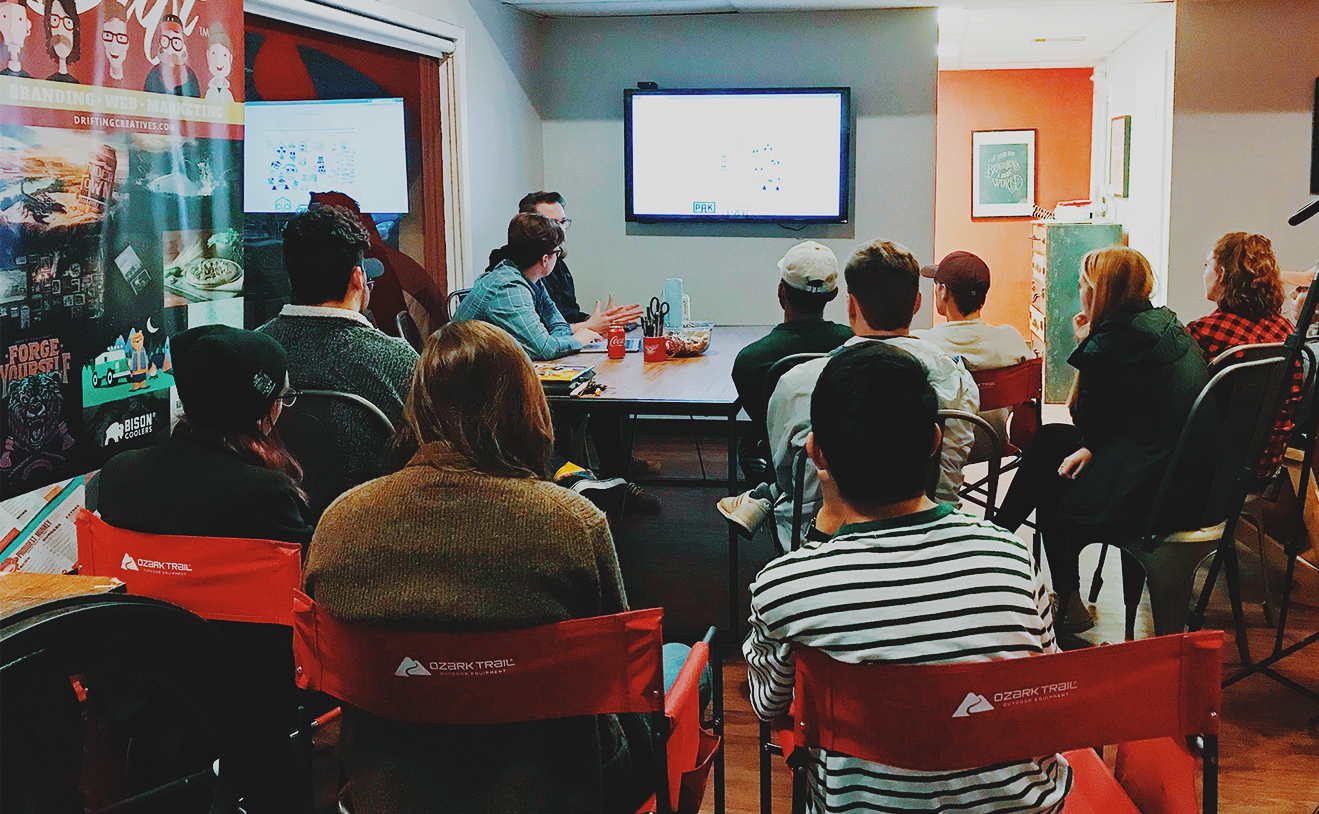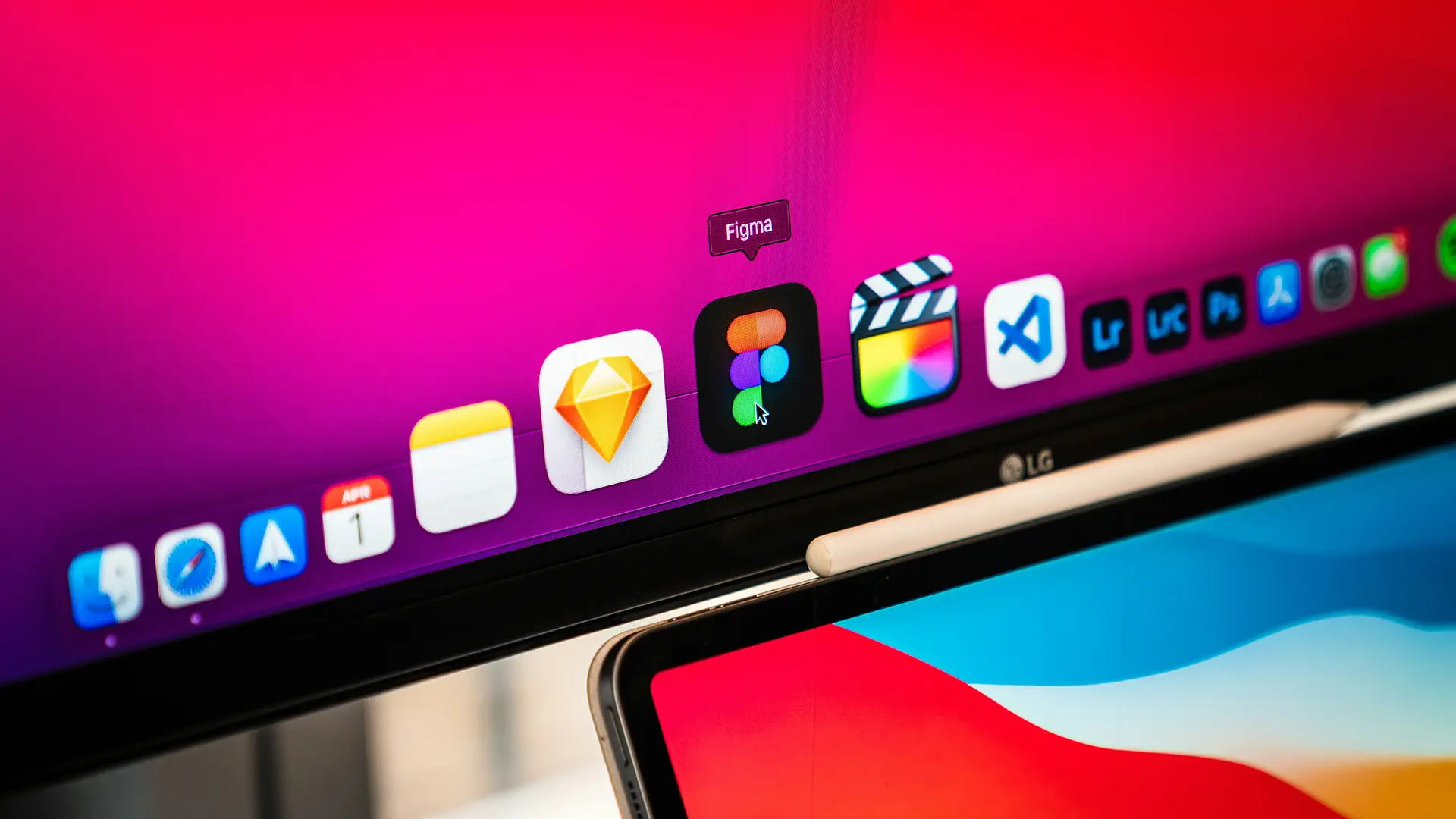February 23, 2018
5 tips for stronger graphic design portfolios
5 min read
This week we hosted the Texas A&M University AIGA chapter at the Drift Office. We ate some pizza, drank some La Croix, and reviewed student graphic design portfolios. Discussing all the tips and tricks for better graphic design portfolios made us think we should write some of this stuff down. We’ve looked at a ton of portfolios over the years, so here are a few thoughts to make your graphic design portfolio work for you instead of against you.
.01 TRIM THE FAT!
The quality of your graphic design portfolio is only as good as your worst project. It’s easy to feel like your portfolio doesn’t have enough “stuff” in it. The tendency is to fill it with everything you’ve done. Even worse, you may have had an internship or part-time design job where you did a lot of work, but maybe it was heavy production stuff, you know like, coupons or spammy banner ads. Just because the work was real, doesn’t mean it will add value to your portfolio. Be critical, curate your work so that it’s only your best work. If that means it’s only three projects – that’s okay. Three projects with good depth can get you a great job.
Note: If you’re on the fence about keeping a particular project, chances are it’s not up to par with your other projects. Find a way to make it more successful or toss it!
.02 GO DEEPER.
For most projects, you should be able to share more than just a final hero shot. Provide as much context as possible. Even if it’s a school project, do your best to convince anyone looking at it that it’s a real project. For branding projects, show other assets – in addition to the logo – that help support the brand, ie: illustrations, icons, patterns, design styles, type styles, etc. that show you understand that a brand is more than a logo. Even if it wasn’t part of your school project, add to it, revisit old work, develop out those concepts so there’s some real meat to them. Show your process, sketches, notes, ideas, etc. – design is so much more than how pretty you can bend and shape vectors. It’s always about the idea, first. Use mock-ups where appropriate. There are tons of great ones available (creativemarket.com or graphicburger.com), but be careful, don’t just slap a logo on 5 different mock-ups.
Note: Because of how easy mock-ups have made it to show work, we’ve been seeing lots of the same mock-ups used. Grab a photographer friend, and art direct a photoshoot of your work. Find ways to make the projects as real as possible. Get people in the photos! If it’s a menu design, have someone holding it.
.03 KNOW YOUR AUDIENCE.
Applying in-house? What industry? Accounting? Oil and Gas? Education? Or are you applying to a small-to-large creative agency? The way a hiring manager at an Accounting firm reviews applicants may be very different than a creative agency where an Art Director may be looking at your work. While you’re not likely to change your portfolio, you can tweak your cover letter and email to fit the proper audience. A smaller studio may want to see more personality – they’ll have to work pretty close to ya day in and day out. A larger agency or in-house position may be looking purely at the work and accomplishments. Do some research, learn about their culture, and make sure it’s a good fit for you. You’re joining their team just as much as they’re becoming your team.
.04 GO BIG OR GO HOME.
We’ve seen plenty of portfolio templates that are so narrow the images end up being around 600-800px wide. Then you put your fancy logo into a mock-up and next thing you know, the thing you made is only 200px wide inside of a 800px wide photo. The bigger the better. Find portfolio templates that are full width or at least ~1400px wide (Squarespace has some good ones, or make your own with WordPress). Then make sure your mock-ups show off the detail of the work you did. If the collateral in your branding project isn’t cool enough to see it up close, may need to reconsider it’s place in your portfolio.
Note: Be sure to optimize your images for web. If your images are too big you can cause your site to run slowly.
.05 GET INSPIRED
If you’re struggling to figure out how to organize your portfolio, how you should show off the work, or how many photos is too many, or how many projects is too many, or any other questions, then spend some time searching the many, many creative agencies and take a look at their portfolios. The way you’re trying to show off your work to get hired, is no different than the way we’re trying to show off our work as an agency, to get hired by potential customers. So spend some time and really do some research. Just pick a city and type into google, “branding agency” or “advertising agency” and then pick another city and do the same thing. Soon you’ll have plenty of resources and hopefully some good ideas for your own.
Did we miss anything? Not answer your questions? Shoot us an email (hello@driftingcreatives.com) with your questions and we’ll do our best to answer them!
Check out the beautiful crew of portfolio reviewers and reviewees.
 Jeff, Nabil, & Allison
Jeff, Nabil, & Allison  Dre, Zach, & Frank
Dre, Zach, & Frank  Kate, Svannah, & Jonathan
Kate, Svannah, & Jonathan  Melissa, Cecelia, & Gavin
Melissa, Cecelia, & Gavin  Maya, Martin, & Bayley
Maya, Martin, & Bayley






